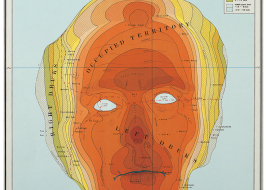Where Science Meets Art
Meetings between science and art, an exchange of ideas between scientists and artists
Curator: Yivsam Azgad
Contemporary conceptual art, much like the art of science, sprouts from an inner seed, within the awareness of the artist or scientist. Each must then undergo a rigorous process of refinement, isolation and experimentation. Each of these worlds is based on a central tenet of precision and consistency. In this, the ideologies and roots of the two appear not only to approach each other, but to abut in many places.
At the Weizmann Institute of Science, art is seen to be a complementary activity, so that scientists and artists can, together, observe the world from a higher vantage point in a more critical and precise way. In other words, the synergy that occurs when science and art are brought together – when the two world views meet – can lead to more significant achievements in the enduring quest to understand the world and our place in it.
Based on this concept, art exhibits have been displayed in various work spaces in the Weizmann Institute of Science in recent years – primarily showings of contemporary Israeli art.
Admission to the art exhibitions at the Weizmann Institute of Science is free and open to the public on weekdays (Sunday to Thursday) from 09:00 to 15:00. The exhibitions are closed on weekends, holidays, and holiday eves.

Kariel Gardosh (Dosh)
"False Tales – The Contrast Formula"
Artist wall in Michael Sela Auditorium
》

Itamar Procaccia, Gregory Falkovich, Victor Steinberg, Norman Zabusky
"Everything Flows"
Raoul and Graziella de Picciotto, 4th floor
》

Leah Goldberg
"Is It True"
Stone Administration Building, Entrance floor
》

Oran Hoffmann
"Point"
The David Lopatie International Conference Center
》

Ziva Botner | Photographs
"A Moment Before, A Moment After"
Raoul and Graziella de Picciotto Building for Scientific and Technical Support, 1st floor
》

28 designers
"Posts of Hope"
Stone Administration Building, first floor
》

Rickey Benjamin
"Simple fractions"
Raoul and Graziella de Picciotto Building for Scientific and Technical Support, 3rd floor
》

Paintings by girls and boys
"Women scientists"
Stone building, ground floor
》

Orit Bechar and Yossi Shohat
"Photographed at the Weizmann Institute of Science"
Raoul and Graziella de Picciotto Building for Scientific and Technical Support, 2nd floor
》

Joshua Griffit
"Bearing Souvenirs"
Stone Administration Building, first floor
》


